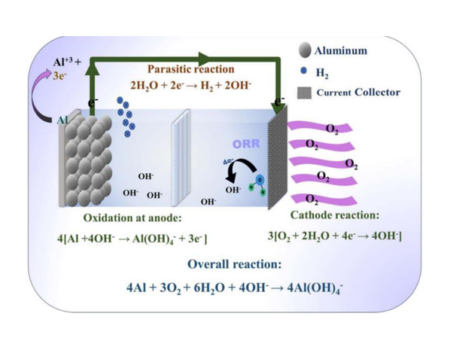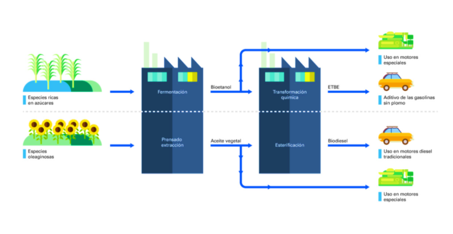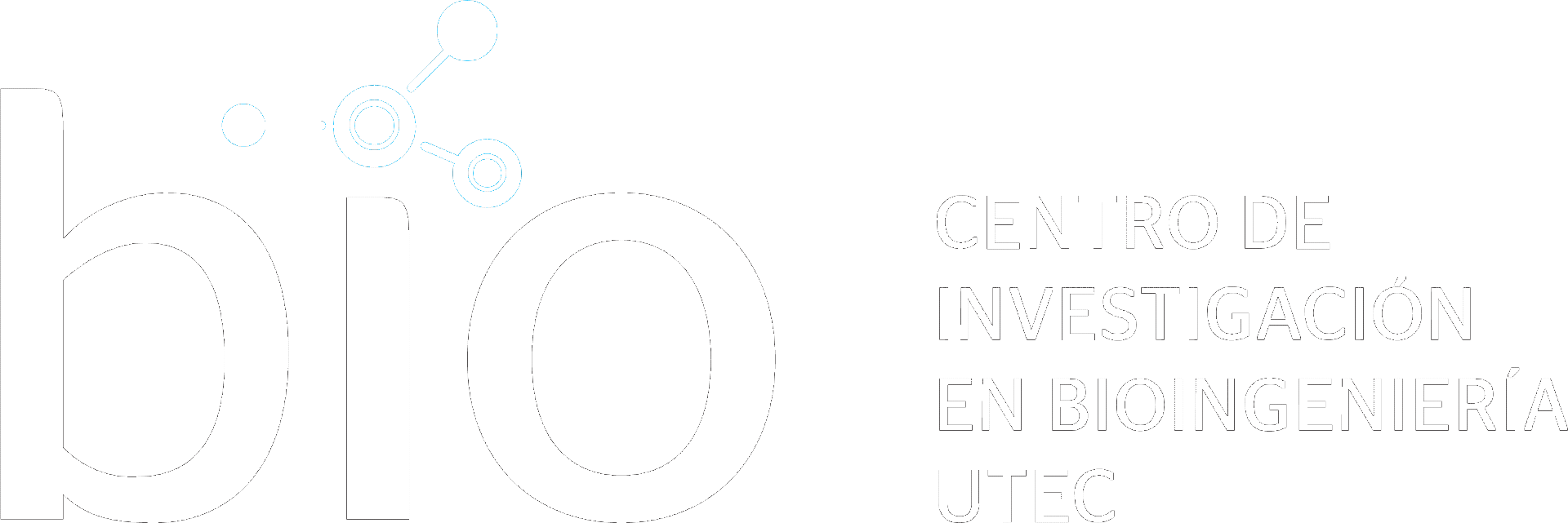
Full Time Professor
Bioengineering and Chemical engineering Departmente
Although the use of living organisms in industry is becoming increasingly common, the control of biotechnology processes remains complex and represents one of the greatest challenges in these applications. Options for increasing efficiency now available, including the use of specific strains of micro-organisms, the use of various substrates for microbial growth, monitoring of external conditions, process automation or the use of genetic engineering. In the ongoing search for sustainable and efficient methods for biotechnology, a recent study published in the journal Sustainability explores the use of magnetic fields to improve biotechnological processes in both micro-organisms and plants. This approach could not only increase the efficiency of these processes, but also reduce their environmental impact.
The study highlights several promising applications of magnetic fields in micro-organisms, such as improving process efficiency and accelerating biomass growth and production. In the biotechnology context, it has been found that the application of magnetic fields, even low frequency ones, can influence the growth and metabolism of organisms without altering the characteristics of the culture medium or end products. This makes them non-invasive and potentially sustainable tools for controlling various biotechnological processes.
Application of magnetic fields in biotechnological processes using eukaryotic organisms
Recent research has shown that magnetic fields can enhance ethanol production and plant-based phytoremediation. In addition, its influence on human immunity and potential use in medical treatments are emerging as areas of great interest.
For example, in ethanol production, magnetic fields have been found to increase the efficiency of fermentation by reducing the time needed to reach maximum output and improving the economic viability of the process. Anaerobic fermentation of alcohol is related to the production of gaseous CO2 and increased biomass. It has been hypothesized that static magnetic fields influence the conversion of glucose to ethanol and biomass, increasing the conversion rate compared with control crops.In addition to improving ethanol production, magnetic fields could regulate the mycotoxin content in plant-based fermentation substrates. Although some studies have not observed significant changes in mycotoxin concentration, the application of magnetic fields in S. cerevisiae fermentation shows potential to reduce these contaminants.
In the field of plant biotechnology, these magnetic fields also have great potential and could be applied as a low-cost biotechnology upgrade. Unlike fields used in yeasts and prokaryotes, the fields investigated in plants are much higher (100-400 mT), and the lower fields have been considered not to be sufficiently effective. Several studies have observed the beneficial effects of magnetic fields on the process of phytoremediation of metal contaminated soils. The results show that the application of magnetic fields improves the efficiency of soil remediation, with a significant reduction in total Cd content and in the content of bio-available Cd in the soil.
It has also been investigated how the exposure of seeds and plants to magnetic fields can increase their capacity to accumulate heavy metals, improving the efficiency of phytoremediation of contaminated soils. Some authors have shown that plants grown from seed pretreated with magnetic fields have the ability to accumulate between 28.8% and 250.1% more metals (Cu, Cd, Hg, Pb, Zn, Cr). On the other hand, authors cited in the paper reported that seed pretreatment with a magnetic field helped plants to overcome periods of drought of 3 to 10 days and had a positive impact on the phytoremediation process, biomass production and pigment levels.
Magnetic fields have proven to be a valuable tool in adjunctive therapy for the treatment of various diseases. Among the most studied applications is its use in auxiliary medical procedures for cancer treatment, by improving the immune response, increasing the death of tumor cells. In addition, the combination of magnetic field-induced hyperthermia and the integration of nanoparticles containing anticancer drugs has shown promising results. Some studies highlight the effects of electromagnetic fields on tissue regeneration, finding that frequencies and intensities of electromagnetic fields pulsed in the range of <100 Hz and 3 mT have positive effects on the acceleration of wound healing processes and the treatment of arthritis, among others.
Application of Magnetic Fields in Biotechnological Processes with Prokaryotic Organisms
These effects have been studied mainly because of their simpler cellular structure, rapid response to environmental changes and wide industrial applications. Preliminary findings on the use of electromagnetic fields to control prokaryotic organisms cover a number of areas, including the food industry, waste water treatment plants, biofilm removal, Improved antibiotic sensitivity and recovery of metals by bacteria.
In sewage treatment plants, they have been found to help stabilize bacterial communities in activated sludge, reducing the need for chemical treatments. Static magnetic field is presented as a promising method for improving the biodegradation of organic substances and nitrogen removal. The static magnetic field also had a significant impact on the stability of the microbial community structure, favoring the stability of the denitrifying bacteria. For photosynthetic bacteria, at 0.35 T, the lowest value of COD (Chemical Oxygen Demand) was recorded after 48 hours, one day earlier than in the control groups. However, prolonged exposure to the magnetic field for more than 6 days leads to accumulation of dead or inactive microorganisms in the system, thus affecting sludge activity and promoting the growth of filamentous microorganisms.
Another area that has received limited exploration is the potential for improved biological disposal of oil in case of release to the environment. Ren et al. investigated the effect of a static magnetic field on oil removal by gram-negative bacteria. The results showed that low intensity magnetic fields (15-35 mT) improved the ability of the bacteria Acinetobacter sp. to remove oil by 11.9% at 25 mT compared with control. This magnetic field density provided a sufficient increase in membrane permeability without damaging it and improved the activity of superoxide dismutase (SOD), effectively increasing the ability of bacteria to degrade oil.
Because of their supposed positive effects, magnetic fields have potential for application in the food industry as they do not alter the chemical composition of products. Weaker magnetic fields (in the mT range) generally support microbial growth, while high intensity pulsed magnetic fields are widely used as non-thermal sterilization technologies in food processing. These technologies are associated with short sterilization times and low energy consumption, and are better at preserving the original nutritional and sensory qualities of food.
Other areas where magnetic fields are already being used include the improvement of the fermentation process. Most fermented foods require a natural aging process to develop the desired flavors and aromas, which is often a barrier to profitable production. Therefore, a process that improves the desired flavor in a shorter period of time would be highly beneficial. Previous studies have explored the use of magnetic fields to assist microbial fermentation and favourable results have been observed with the application of various intensities of magnetic fields to accelerate the aging of a wide range of foods fermented with Application of variable magnetic fields (0-5 mT) in the process.
Another potential application is in the production of dietary supplements. According to studies cited in the paper, spirulina cells exposed to a magnetic field (60 mT) showed an unchanged protein content, but the carbohydrate concentration decreased by 69.1%. This indicates that the biomass obtained through this method has the potential to be used in the development of low-sugar protein supplements, making them suitable for diabetic patients.
Magnetic fields have potential applications in medicine as a means of sterilization (high frequency fields), as well as a mechanism for increasing the sensitivity of pathogens to antibiotics and removing bacterial biofilms from surgical instruments. In the medical field, the use of magnetic fields in conjunction with magnetic nanoparticles for biofilm removal was also found. Magnetic nanoparticles have been documented to penetrate the biofilm and create artificial channels within its matrix, resulting in 4 to 6 times faster biofilm removal by facilitating improved penetration of antibiotics through these artificial channels.
Regulation of metabolism and activation of enzymes by magnetic fields is an emerging area in biotechnology. Bacterial enzymes (_-amylase and L-aspartate oxidase) conjugated with iron oxide nanoparticles have been investigated, which have the ability to increase their temperature in the presence of a strong magnetic field (25.2 mT, frequency 829 kHz). Thermophilic enzymes chemically bound to nanoparticles were remotely activated by a localized temperature rise for 30 minutes. The nanoactivation of thermophilic enzymes using a magnetic field has potential applications in various areas. These findings demonstrate the possibility of carrying out multi-enzyme-based biotechnological processes in which one of the enzymes/substrates/products is thermolabile, while the other requires a high temperature for its activity. Enzyme activation can accelerate specific processes through which microorganisms produce valuable products with potential industrial applications. For example, microbial fermentation plays a crucial role in hydrogen production.
When a magnetic field (3.2 mT) was applied to the glucose fermentation system by Clostridium pasteurianum, an increase in hydrogen production of 366% was observed compared with the control.
In addition, it has been found that the application of magnetic fields can activate the metabolism of bacteria used in biolixiviation for the recovery of metals from electronic waste and low-grade minerals, making this process more efficient and sustainable. Information was collected on the improvement of biotechnological processes for metal recovery from electronic waste or low-grade minerals containing metals such as zinc, nickel, lead, cadmium, copper or cobalt, by applying magnetic fields during biolixiviation. The bacteria A. ferrooxidans has potential applications in the desulphurization of solids and gases, the recovery of metals from minerals, electronic waste and sludge, as well as the simultaneous production of certain products with industrial potential. Iron and sulfur oxidant bacteria are known for their slow growth rates, which limits the practical application of biolixiviation due to the slow reaction rate and long operation time.Currently, electromagnetic fields are used for the magnetic separation of substrates or biolixiviation products. Static magnetic fields (3.15 mT) were tested and the ability to increase the biolixiviation yield of copper pyrite by 15.8% to 18.9% over a 25-day culture period was observed. Similar results were achieved using static magnetic fields (2 mT, 5 mT, 8 mT and 11 mT) during arsenic and cadmium biolixiviation, where the yield was higher by 2% to 8% compared to the control.
Conclusion
The application of magnetic fields in biotechnology presents an innovative and promising approach to improving the sustainability and efficiency of industrial processes. From activating bacterial metabolism to improving the bio-leaching of metals, magnetic fields offer multiple benefits that deserve further exploration in the future.
Despite promising results, the study notes that the application of magnetic fields in biotechnology is still in its early stages. The mechanisms behind these effects need to be fully understood and conditions for different applications must be optimized. So, with more research, these methods could become key tools for greener and more efficient biotechnology.
Bibliographic references
Sincak, M., Luptakova, A., Matusikova, I., Jandacka, P., & Sedlakova-Kadukova, J. (2023). Application of a magnetic field to enhance the environmental sustainability and efficiency of microbial and plant biotechnological processes. Sustainability, 15(19), 14459.
Sincak, M., Turker, M., Derman, Ü. C., Erdem, A., Jandacka, P., Luptak, M., … & Sedlakova-Kadukova, J. (2024). Exploring the impact of magnetic fields on biomass production efficiency under aerobic and anaerobic batch fermentation of Saccharomyces cerevisiae. Scientific Reports, 14(1), 12869.
Ren, Z.; Leng, X.; Liu, Q. Effect of a static magnetic field on the microscopic characteristics of highly efficient oil-removing bacteria. Water Sci. Technol. 2018, 77, 296–303.
Li, Z., Li, Y., Chen, C., & Cheng, Y. (2021). Magnetic-responsive hydrogels: From strategic design to biomedical applications. Journal of Controlled Release, 335, 541-556.




